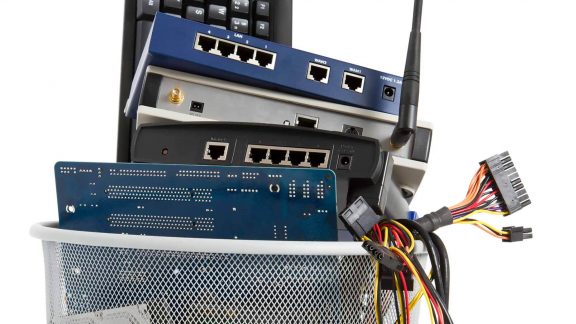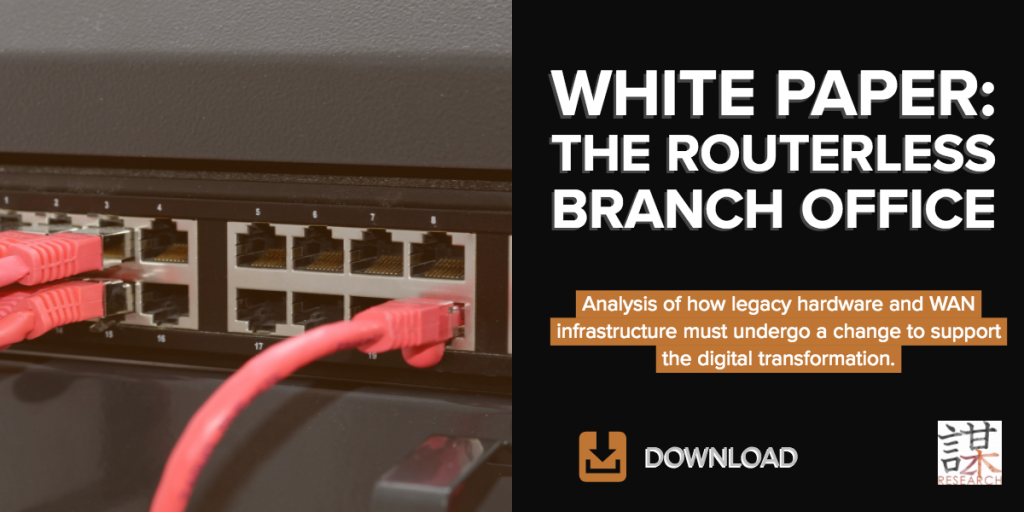Today’s network looks and behaves very differently than networks of decades past. The days of transmitting just data or simple files across private and public networks is over and now big packet requirements that enable video and voice is commonplace. The tidal shift to cloud-delivered services and applications is the new norm and the corporate network must be enabled to support the exponential bandwidth requirements that accompany this shift.
A staple of the network infrastructure has always been the branch router, installed at each remote location to route network traffic to other parts of the network or back to the data center. During the network architecture process, the common thought is that it cannot exist without the branch router. But is that really the truth?
We don’t believe it is. And here’s why.
Routers and routing are not the same thing, meaning routing can be done entirely outside the form factor of a traditional router. Which then begs the question, if routing capabilities are integrated into other solutions to handle network traffic, is it enough to satisfy the demands of the enterprise?
Yes.
And if we ask industry watchdogs, branch routers have lost their place as a network staple, especially as complementary solutions emerge, offering the same functionality with a lot more flexibility, scalability, and business enablement capabilities than ever before.
- Technavio – Estimates 9% CAGR by 2021
- Research and Markets – Estimates a 8.64% CAGR by 2021
By contrast, software defined WAN (SD-WAN) is being adopted at an exponential rate with a 69% CAGR predicted by 2021, because it
enables true optimization of all network traffic transport regardless of the channel, allows for global scalability of network services, enables seamless access to cloud-delivered applications and services, and incorporates other end-point capabilities such security, VoIP switching functionality, and most importantly, routing. It becomes a direct replacement and excellent alternative for the branch router.
Let’s examine why moving away from a branch router to a cloud-ready platform, like SD-WAN, is the best solution for the enterprise.
Lower Total Cost of Ownership (TCO)
Branch routers have high CAPEX implications, require ongoing and high-cost maintenance, maintained and managed by highly trained and costly technicians, and require unit-by-unit on-site configuration and updates. In contrast, an SD-WAN solution is available as a network as a service (NaaS), which would aggregate all associated costs into one contract: maintenance and support, push updates and configurations, and the ability to deliver all content across multiple transport methods dynamically.
Complete Visibility and Control
The majority of today’s branch routers work independently of each other. They must be managed at each site location and lack the ability to be managed from a centralized location. However, SD-WAN is architected to be completely cloud delivered which inherently normalizes the entire network structure and allows management from a centralized location through a single pane of glass. All network activity becomes transparent, recorded, analyzed, and can be actioned on. Not only can updates and configuration changes be pushed from the central management portal, but issues are quickly identified and proactively fixed.
Business Continuity
Branch routers are often limited in dynamically changing the transport path when sending data. If one transport path has issues, the router will route the traffic to a secondary transport path and avoid sending additional traffic through the ‘downed’ path until it has been completely repaired. SD-WAN is enabled with Dynamic Multi-Path Optimization (DMPO), enabling the enterprise to maintain network functionality at all times as traffic is routed on a packet-by-packet basis. Even if there is an issue with the ‘downed’ path, SD-WAN can still optimize it and remedy the problem in order to optimize all available transports. Downtime and being offline is costly to any enterprise and SD-WAN allows revenue generating activities to continue at all times, regardless of network issue.
Scalability
Innovation doesn’t stop and network infrastructure needs to keep up. But purpose-built hardware can be hugely limited in how it incorporates new innovations, often requiring significant re-architecting or hardware replacements. As an alternative, SD-WAN has scalability and enablement in mind. The architecture on which it is built delivers a level of flexibility that adapts well to new technology, provides configuration changes on the fly, and can propagate those across an entire network within minutes.
Trying out SD-WAN to see if it’s right for your business is relatively low risk. NSX SD-WAN by VeloCloud can be run over the top of any existing infrastructure, alongside branch routers, or branch routers can be entirely removed without disruption to the network.
To read the case study, click here “The SD-WAN Ushers in the Era of the Routerless Branch Office.”







